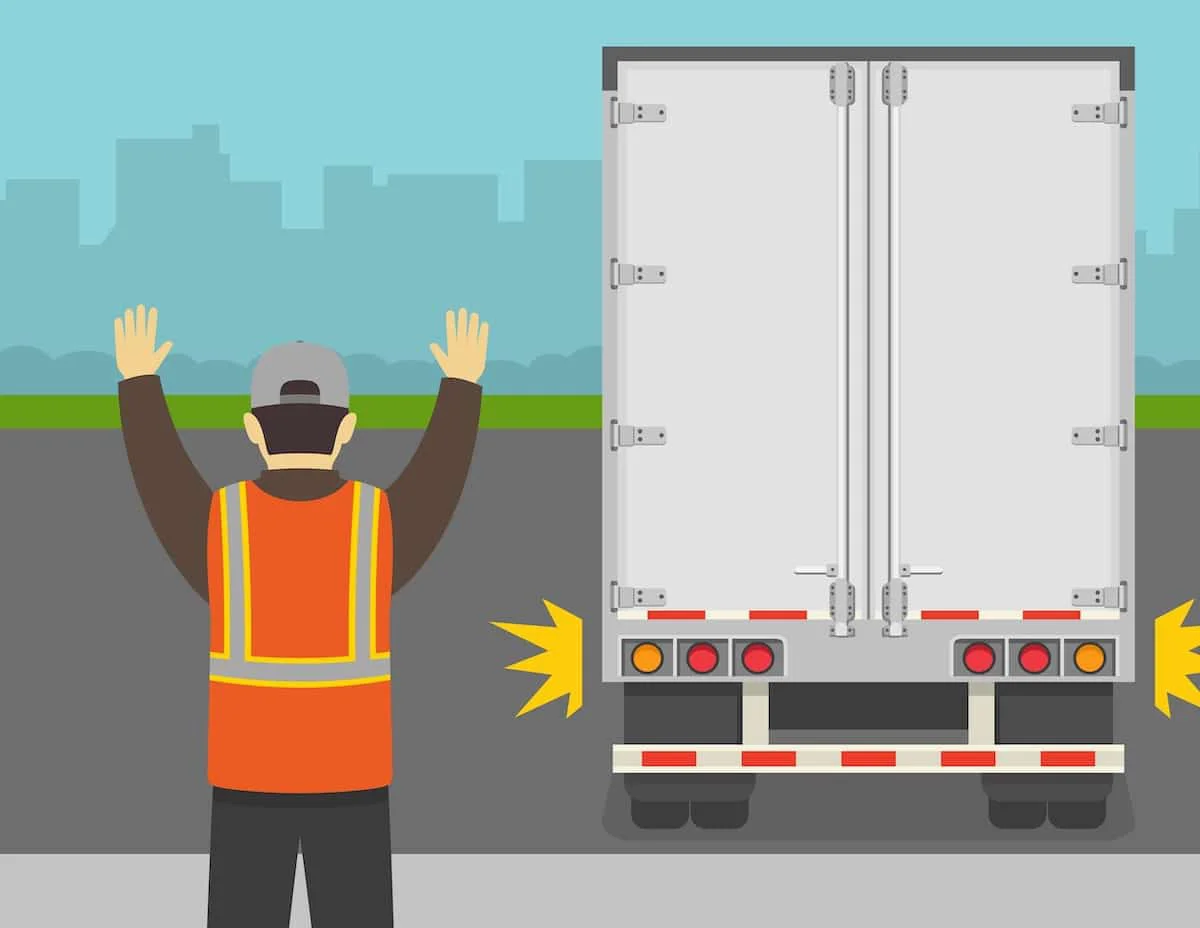
Tackling yard safety in logistics and warehouse management can seem daunting. This post simplifies it for you, offering key strategies for effective and secure yard management.
Picture a busy day in a warehouse yard: Forklifts darting between aisles, trucks queuing up for loading, and a team coordinating this complex operation with precision. This scene is a daily reality in the world of logistics and supply chain management, where yard safety is the linchpin of smooth operations. For those managing these areas, from logistics managers to warehouse supervisors, ensuring a safe and efficient yard is not just about compliance; it’s essential for operational success.
In this article, we dive into the essentials of yard management safety. We’ll explore practical strategies and insights tailored to the realities of warehouse and distribution centers. Our discussion will cover everything from warehouse yard safety to broader supply chain yard safety considerations, focusing on actionable yard safety protocols and effective yard management safety practices.
Understanding the Importance of Yard Safety
The yard is a critical hub in any logistics operation, a place where safety can’t be an afterthought. It’s where the potential for accidents is always present, demanding constant vigilance and robust safety measures. Effective yard safety is more than just following rules; it’s about integrating safety into the fabric of daily operations, ensuring that every process, from receiving to shipping, is conducted with safety in mind.
Effective yard safety combines careful planning, thorough employee training, and the strategic use of technology. It’s about fostering a culture where safety is a priority in every task and decision. In the sections that follow, we’ll unpack these elements, providing a detailed guide to enhancing your yard safety standards.
Learn more: Yard Management 101: Introduction and Best Practices
Key Safety Protocols for Effective Yard Management
Safety in the yard is a multifaceted challenge, requiring a comprehensive approach. Here are some essential protocols that should form the backbone of any yard safety strategy:
1. Strategic Planning and Layout Design
- Optimizing the Yard Layout: A well-planned yard layout is crucial for safe operations. This includes clear vehicle routes and exit routes, designated pedestrian walkways, and strategically placed loading and unloading zones.
- Signage and Markings: Proper signage and floor markings are essential for guiding traffic and alerting staff to potential hazards. This is important throughout, but especially in busy areas like loading docks.
2. Regular Safety Training and Awareness
- Ongoing Training Programs: Regular training sessions help keep safety at the forefront of employees’ minds. Proper training should cover operational procedures, emergency response, and the correct use of safety equipment.
- Safety Awareness Campaigns: Regular safety meetings and campaigns can reinforce the importance of safety and keep it a priority.
- Meeting OSHA Guidelines: Training should align with the guidelines set by the Safety and Health Administration and focus on occupational safety and health best practices.
3. Accident Prevention and Emergency Preparedness
- Proactive Accident Prevention: Regular risk assessments and proactive measures are key to preventing accidents as well as minimizing human error. This includes equipment checks and maintenance, as well as monitoring for potential hazards.
- Emergency Response Plans: Having a well-defined emergency response plan, regularly updated and practiced, ensures preparedness for any situation. Fire safety should be a key component of your emergency response plans, with regular drills and accessible firefighting equipment.
These protocols are crucial not only for logistics managers but also for warehouse operators who are in charge of implementing these safety measures.

Leveraging Technology for Enhanced Yard Safety
In today’s tech-driven world, leveraging technology is key to enhancing yard safety. Advanced Yard Management Systems (YMS) offer a range of features that can significantly improve safety protocols:
- Real-Time Tracking: Systems like Logimax’s YMS provide real-time tracking of vehicles and equipment, reducing the risk of collisions and enabling quicker response to potential hazards.
- Automated Alerts and Reporting: Automated alerts for safety breaches and comprehensive reporting tools help in identifying trends and areas for improvement.
- Enhanced Communication: Effective communication tools within a YMS ensure that all team members are aware of current yard activities, further enhancing safety.
Aside from a YMS, integrating advanced yard management software with other systems can create a cohesive approach to safety and operations. These may include your Warehouse Management System (WMS), Transportation Management System (TMS), and other systems.
Practical Strategies for Implementing Yard Safety
Implementing these safety protocols requires a strategic approach. Here are some practical strategies to ensure effective implementation:
- Engage Leadership and Staff: Safety is a team effort. Engaging leadership, warehouse workers, and other staff in safety discussions and decision-making fosters a culture of safety.
- Regular Audits and Inspections: Conducting regular safety audits and inspections helps identify and rectify potential hazards before they lead to accidents. These audits are crucial for identifying potential safety hazards and putting in place corrective actions.
- Leverage Data for Continuous Improvement: Use data from safety reports and system analytics to continuously improve safety measures.
Creating a Safety-First Culture in the Yard
The foundation of a safe yard is a safety-first culture. This goes beyond protocols and systems; it’s about creating an environment where safety is ingrained in every aspect of the yard management process.
1. Encouraging Employee Involvement:
- Safety Committees: Establish safety committees involving employees from various departments to discuss safety issues and solutions.
- Feedback Mechanisms: Implement channels for employees to report safety concerns and suggestions without fear of reprisal.
2. Recognition and Incentives:
- Safety Rewards: Recognize and reward individuals or teams for exemplary safety practices.
- Incentive Programs: Develop incentive programs that motivate employees to adhere to and improve safety standards.

Integrating Safety with Operational Efficiency
Safety and efficiency are not mutually exclusive; in fact, they complement each other. Here’s how you can integrate safety into your operational processes:
1. Process Integration:
- Safety Checks in Operational Procedures: Integrate safety checks into regular operational procedures, ensuring they become a natural part of the workflow.
- Technology Integration: Utilize technology, like a YMS, to streamline safety processes, making them more efficient and less intrusive.
2. Continuous Improvement:
- Regular Review and Adaptation: Continuously review and adapt safety procedures to reflect changes in operations, technology, and regulations.
- Learning from Incidents: Analyze any safety incidents to understand their root causes and prevent recurrence.
The Role of Logimax’s Yard Management System in Enhancing Safety
While we have touched on the role of technology in yard safety, it’s worth delving deeper into how a specific solution like Logimax’s Yard Management Software can be a powerful tool in your arsenal:
- Enhanced Visibility and Control: Logimax’s YMS offers unparalleled visibility and control over yard operations, significantly reducing the risk of accidents and ensuring a safer working environment.
- Customizable Safety Features: Our system can be customized to meet specific safety needs, whether it’s tracking equipment, managing traffic flow, or ensuring compliance with safety regulations.
- Data-Driven Safety Decisions: With robust data analytics, Logimax’s YMS enables you to make informed decisions, identifying potential safety issues before they become problems.
Conclusion
Creating a safe yard environment is a complex but achievable goal. By implementing robust safety protocols, leveraging technology like Logimax’s Yard Management System, and fostering a culture of safety, warehouses and distribution centers can significantly reduce risks and enhance overall efficiency. Remember, a safe yard is not just about preventing accidents; it’s about creating an environment where safety and efficiency go hand in hand, driving the success of your logistics operations.
Interested in learning more about how Logimax’s Yard Management System can enhance your yard safety? Contact us for more information and to get a demonstration.



